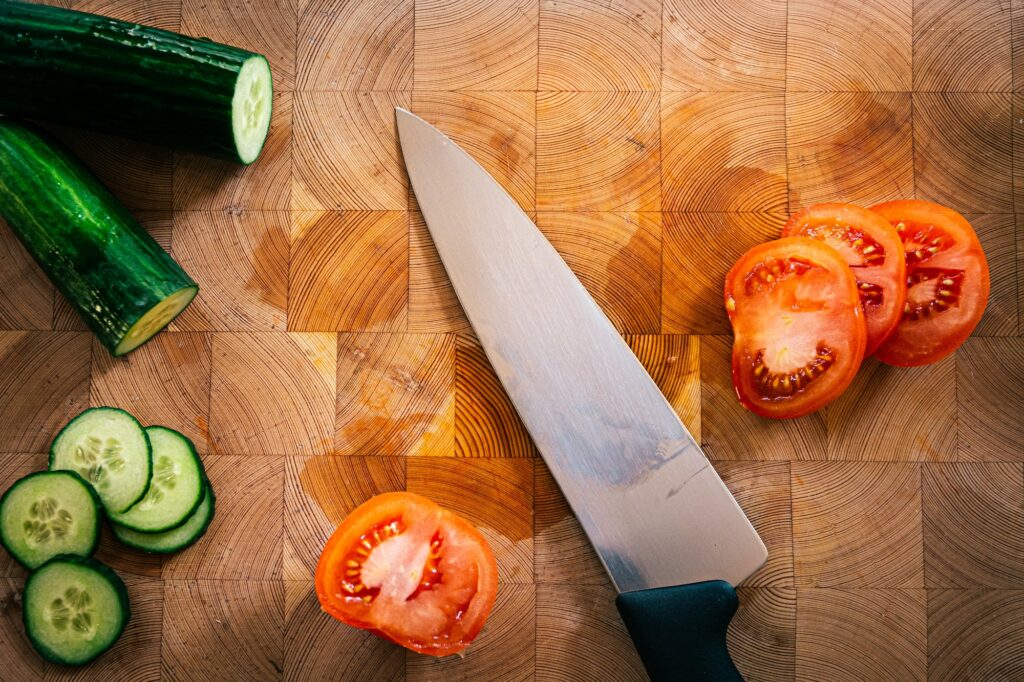Are you often confused about the color of cutting boards dedicated to specific types of produce? This article focuses on the topic: what is the color of the produce-dedicated cutting board? and covers all aspects you’ll need to consider to make informed decisions in your kitchen.
In most professional kitchens, the use of color-coded cutting boards is integral to maintaining food safety and organization. Not only does this practice help in preventing cross-contamination, but it also streamlines the cooking process. When it comes to produce-dedicated cutting boards, the recommended color is green.

Why Color-Coded Cutting Boards are Essential
Color-coded cutting boards are essential tools in any kitchen, providing numerous benefits that contribute to efficiency and safety. For those handling multiple food types, understanding the importance of these color codes is crucial.
Prevents Cross-Contamination
The primary benefit of color-coded cutting boards is preventing cross-contamination. When cooking various types of food, like meat, vegetables, and seafood, it’s essential to keep them separate to avoid harmful bacteria transfer.
Streamlines Cooking Process
Having designated boards for specific types of food can significantly streamline your cooking process. This practice helps in maintaining a clean and organized kitchen environment, giving you more time to focus on perfecting your dishes.

Dedicated Produce Cutting Boards
When discussing what is the color of the produce-dedicated cutting board, the answer is commonly green. This color is universally accepted in professional kitchens as the marker for any kind of produce, from leafy greens to root vegetables.
Why Green for Produce?
The choice of green is logical and straightforward. Green is synonymous with freshness and nature, making it the perfect color for produce. Green cutting boards are designed specifically for fruits and vegetables to ensure they stay free from contaminants.

Selecting the Right Cutting Board for Your Kitchen
Choosing the right cutting board goes beyond just its color; it also includes material and size considerations. Understanding the different options available can help you make a more informed choice.
Materials to Consider
When it comes to cutting boards, materials matter. Whether you opt for plastic, wood, or composite boards, each has its pros and cons.
Plastic Boards
Plastic cutting boards are easy to clean and relatively inexpensive. They are also dishwasher safe, making them a convenient choice for many kitchens.
Wooden Boards
Wooden boards are durable and aesthetically pleasing; however, they require more maintenance. Regular oiling and proper cleaning are necessary to keep them in top condition. If you want to know more about treating wooden boards, visit wood treating
Internal and External Resources for Cutting Board Care
Learning to maintain your cutting boards is crucial for their longevity and effectiveness. Here are some internal resources that you might find useful:
For more detailed insights, consider visiting an external resource such as Wooden Board Making.
FAQs
Q: Why are green cutting boards used for produce?
A: Green cutting boards are used for produce to prevent cross-contamination and to keep fruits and vegetables uncontaminated by other types of food.
Q: What materials are best for produce cutting boards?
A: Both plastic and wooden cutting boards can be used for produce. Plastic boards are easier to sanitize, while wooden boards require more maintenance but are more durable.
Q: Can produce and meat be cut on the same board?
A: No, it is best to use separate cutting boards for produce and meat to avoid cross-contamination.
As an Amazon Associate, I earn from qualifying purchases.


